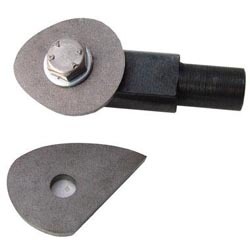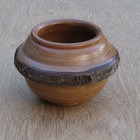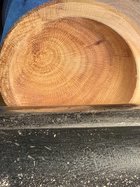I've been told (and read) that when hollowing endgrain, you have to cut from the center towards the rim (i.e. the opposite of a normal bowl) to avoid catches and 'skipping'.
Every time I try this, I get horrible catches/skipping, but hollowing from the rim towards the center seems to work fine.
I know it's hard to tell without seeing me do it, but does anyone have thoughts on what I might be doing wrong?
Hi Gabe! Thanks for posting you question on the AAW Forums. You’ve gotten some great feedback and advice. It is a great place to ask questions like this. I would also encourage you to get involved in your local woodturning club and seek out someone that might be able to help you in person.
Bear with me, as I try to cover a few more pieces to the puzzle.
First, in trying to answer your question, grain orientation is a great place to start. Many turners don’t pay enough attention to this topic. So, congratulations……that is great that you recognize the importance!
Cutting into supported fibers is easier on your body, your lathe, the wood etc. – results in less time sanding.
Most importantly it reduces the chance of a catch.
Most of the time in a bowl format we are in a side grain situation – the grain is perpendicular to the bed of the lathe. So, if you are turning a hollow form, you are correct in your statement we should be cutting out from the center when hollowing a vessel, in an end grain format – the grain is horizontal to the bed of the lathe.
The problem you are having, in my opinion, is that you are trying to use a tool that does not fit the application. When making any cut we either have to have bevel support or we have to understand the 90 degree rule. (The angle of the cutting surface, as presented to the wood, HAS to be 90 degrees or less). A “bowl” gouge, which I use for 99% of the work I do (Push, Pull, Scrape, and Sheer Scraping), the grind is designed for, just that, a bowl. It is possible to hollow a vessel with a bowl or spindle gouge, but you are limited in the shape you can design because you cannot maintain bevel support. This will lead very quickly to getting a catch.
If you are just making a cylinder with straight sides, like in the video that was shared, you can do some hollowing with this cut. BUT, it is a very difficult cut, that can take a long time to master. Especially if you have some shape to your vessel and start exceeding the limitation of your tool in depth.
I would encourage you to put down the bowl gouge, or spindle gouge, when you get to the hollowing portion of your project. I would recommend a boring bar for hollowing, preferably a captured hollowing system.
“Catches” and “Skipping” are 2 words that shouldn’t be in our vocabulary as woodturners. They are scary, dangerous, and NOT fun! A captured hollowing systems can eliminate the possibility of catches when hollowing.
If you have any questions, don’t hesitate to contact me directly thru my website contact form, or email me directly at
lyle@lylejamieson.com.
Hope this helps!
Regards,
Lyle





